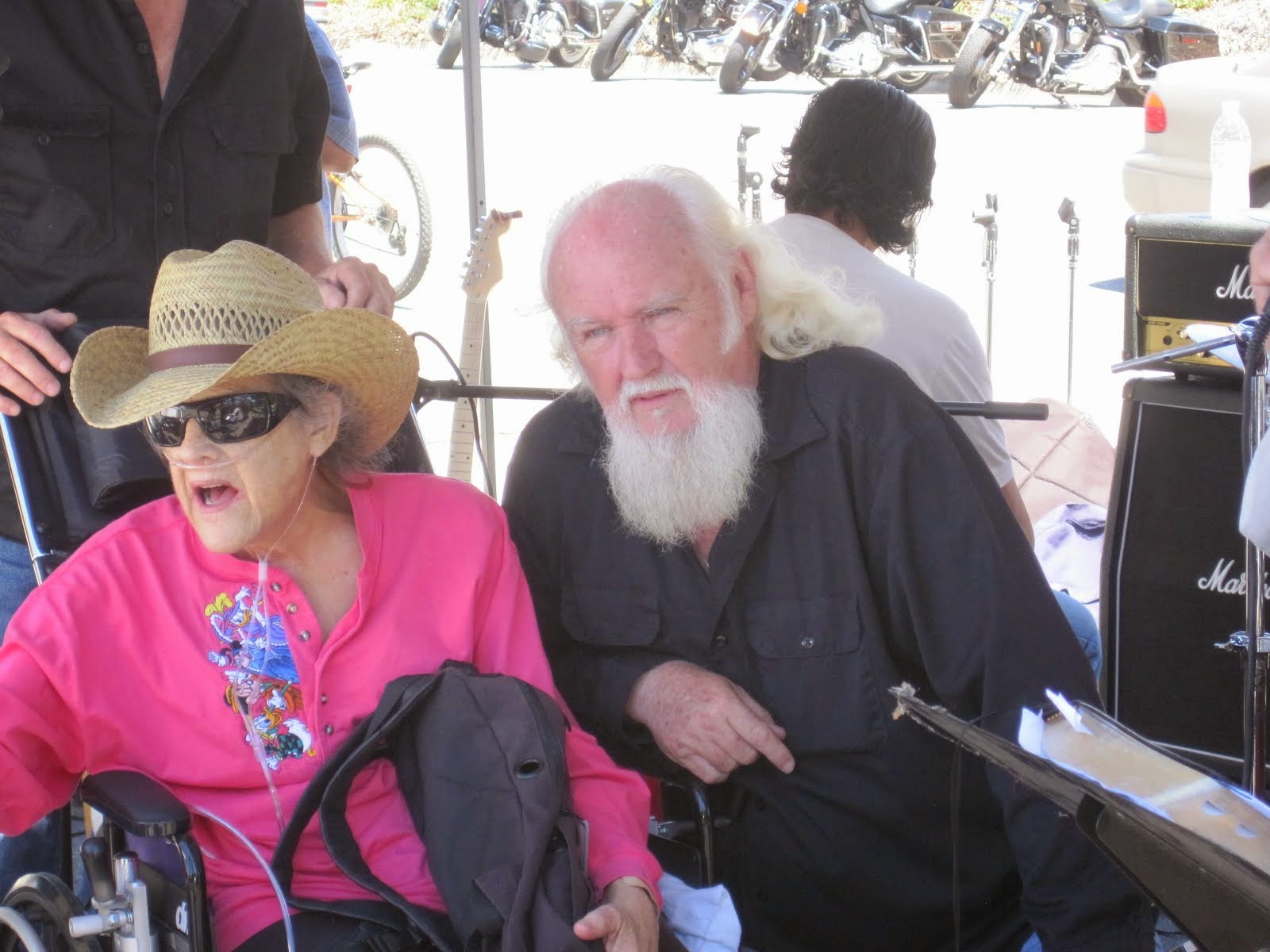OFF THE WIRE
By Gary Robbins, UNION-TRIBUNE
The U.S. Navy has been shifting warships to San Diego from other ports in recent years to better prepare the Pentagon to respond to exactly the sort of military and political tension now occurring between North Korea and South Korea.
North Korea bombed the small South Korean island of Yeonpyeong on Nov. 23rd, killing four people. The bombing came as a US strike group led by the carrier George Washington was preparing to leave for a long-planned exercise with the South Korean Navy.
That exercise is going on now in the Yellow Sea.
The George Washington is homeported in Yokosuka, Japan. But the Navy has been sending many ships and personnel from the East Coast to the the West Coast, notably, San Diego. Southern California also is expected to get a large percentage of the Littoral Combat Ships that will be build for the Navy.
"The shift shows that we're going from worrying about NATO and Russia to worrying about China and Iran," defense analyst and author Eric Wertheim told us in August. North Korea also is a major concern because it has nuclear weapons, and it can fire long-range offensive missiles.
San Diego is currently home to about 60 surface ships and submarines, a figure that will rise to more than 80 by 2014. The Navy already has made such high profile moves as sending the carrier Carl Vinson from Virginia to North Island. The carrier arrived in April.
The city hosts two other carriers, the Nimitz and the Ronald Reagan. The Nimitz is scheduled to leave for a port change on Dec. 2. But the ship will remain on the West Coast, porting in Bremerton, Washington.
The carrier Lincoln briefly visited North Island Naval Station in September to take on crew, supplies, and, offshore, its air wing.
Two other carriers, the Truman and the Lincoln, are currently operating in the western Pacific. The Lincoln took on its air wing off San Diego County in September, and is currently operating with support from a pair of San Diego-based ships, the cruiser Cape St. George and the destroyer Halsey. Lincoln, like other carriers, stocks about 75 aircraft. And ships like Cape St. George and Halsey are designed to fire long-range cruise missiles.
"If the situation escalates, short of general war, I could easily imagine the US wanting a stronger show of force," John Pike, a defense analyst for Globalsecurity.org, said today. "If the CHICOMS (Chinese Communists) are unhappy about one carrier in the North China Sea, possibly their unhappiness at two carriers sailing in their Exclusive Economic Zone might prompt them to get off the dime and lean on North Korea."
The shift in ships and personnel was meant to anticipate such trouble. And the build up has occurred quickly. San Diego County had the highest active duty military payroll in the country last year, pulling ahead of the huge Naval complex in and around Norfolk, Virginia. The local active duty payroll, which includes Camp Pendleton Marines, now stands at about $11.2 billion.
Much of that money is regularly used to put together the sort of carrier strike group that the carrier Washington is now leading. That flat-top is being shadowed by the cruiser Cowpens, and the destroyers Lassen, Stethem and and Fitzgerald. There also may be a submarine in the mix.
“While this exercise, which is defensive in nature, has been planned for some time, it underscores the importance of the ROK-U.S. alliance and our collective commitment to regional security and stability,” said Rear Adm. Dan Cloyd, Commander, said in a statement issued early today.
- US Navy
The San Diego-based cruiser Cape St. George fires a missile.
The West Coast build up goes beyond simply creating strike groups. Increasingly, surface warships, including some stationed in San Diego, are being fitted with SM-3 missiles, a new and evolving weapon that was designed to knock down missiles fired by countries like North Korea and Iran, if necessary. Even older vessels are part of the geopolitical equation. The Navy is considering selling the San Diego-based frigate Jarrett to Taiwan next year to give that nation more protection against China.
All this shifting comes during period when the Defense Department says there will be deep budget cuts. But analysts say that San Diego will largely be spared because of its strategic importance.
"San Diego is in as good if not better position to get through these cuts than any other place," said John Pike, said earlier this year.
skip to main |
skip to sidebar




Bill & Annie

Art Hall & Rusty


NUFF SAID.......


































































OOHRAH

ONCE A MARINE,ALWAYS A MARINE

GIVING BACK


MOUNT SOLEDAD














BIKINI BIKE WASH AT SWEETWATER










FRIENDS





BILL,WILLIE G, PHILIP










GOOD FRIENDS


hanging out

brothers


GOOD FRIENDS

Good Friends

Hanging Out




Bill & Annie
Art Hall & Rusty
Art Hall & Rusty


NUFF SAID.......



















NUFF SAID......



























Mount Soledad




BALBOA NAVAL HOSPITAL
RUSTY DANNY

ANNIE KO PHILIP

PHILIP & ANNIE

OUT & ABOUT

OOHRAH...

OOHRAH
ONCE A MARINE,ALWAYS A MARINE

ONCE A MARINE,ALWAYS A MARINE
American Soldier Network GIVING BACK

GIVING BACK
CATHY & BILL
PHILIP & DANNY & BILL

MOUNT SOLEDAD
bills today
EMILIO & PHILIP
WATER & POWER
WATER & POWER
bootride2013



BIKINI BIKE WASH AT SWEETWATER







ILLUSION OPEN HOUSE

FRIENDS


GOOD FRIENDS



BILL,WILLIE G, PHILIP









GOOD FRIENDS

GOOD FRIENDS
Friends
- http://www.ehlinelaw.com/losangeles-motorcycleaccidentattorneys/
- Scotty westcoast-tbars.com
- Ashby C. Sorensen
- americansoldiernetwork.org
- blogtalkradio.com/hermis-live
- davidlabrava.com
- emiliorivera.com/
- http://kandymankustompaint.com
- http://pipelinept.com/
- http://womenmotorcyclist.com
- http://www.ehlinelaw.com
- https://ammo.com/
- SAN DIEGO CUSTOMS
- www.biggshd.com
- www.bighousecrew.net
- www.bikersinformationguide.com
- www.boltofca.org
- www.boltusa.org
- www.espinozasleather.com
- www.illusionmotorcycles.com
- www.kennedyscollateral.com
- www.kennedyscustomcycles.com
- www.listerinsurance.com
- www.sweetwaterharley.com

Hanging out

hanging out
Good Friends

brothers
GOOD FRIENDS

EMILIO & SCREWDRIVER

GOOD FRIENDS
Danny Trejo & Screwdriver

Good Friends
Navigation
Welcome to Bikers of America, Know Your Rights!
“THE BIKERS OF AMERICA, THE PHIL and BILL SHOW”,
A HARDCORE BIKER RIGHTS SHOW THAT HITS LIKE A BORED AND STROKED BIG TWIN!
ON LIVE TUESDAY'S & THURDAY'S AT 6 PM P.S.T.
9 PM E.S.T.
CATCH LIVE AND ARCHIVED SHOWS
FREE OF CHARGE AT...
BlogTalkRadio.com/BikersOfAmerica.
Two ways to listen on Tuesday & Thursday
1. Call in number - (347) 826-7753 ...
Listen live right from your phone!
2. Stream us live on your computer: http://www.blogtalkradio.com/bikersofamerica.
A HARDCORE BIKER RIGHTS SHOW THAT HITS LIKE A BORED AND STROKED BIG TWIN!
ON LIVE TUESDAY'S & THURDAY'S AT 6 PM P.S.T.
9 PM E.S.T.
CATCH LIVE AND ARCHIVED SHOWS
FREE OF CHARGE AT...
BlogTalkRadio.com/BikersOfAmerica.
Two ways to listen on Tuesday & Thursday
1. Call in number - (347) 826-7753 ...
Listen live right from your phone!
2. Stream us live on your computer: http://www.blogtalkradio.com/bikersofamerica.
Good Times
Hanging Out

Key Words
- about (3)
- contact (1)
- TENNESSEE AND THUNDER ON THE MOUNTAIN (1)
- thinking (1)
- upcoming shows (2)
Blog Archive
-
▼
2010
(4242)
-
▼
November
(629)
- NATIONWIDE, Americans Are Living (And Dying) In A ...
- CYBER SCAMS, BE WARNED....The 12 cyber scams of Ch...
- Media Campaign Begins, Head Injuries: Why Motorcyc...
- Football Helmets - NY Times, Used helmets worn by ...
- New Zealand, Warehouse new gang base
- Growth of San Diego's Navy fleet tied to tension i...
- Canada, ,Salmon Arm, Kelowna. 'They were up to no...
- SPINELESS PUKE BAG DISTRICT ATTORNEY, JONATHAN BLO...
- What are some good responses to this helmet statem...
- DOT vs. ECE Helmet Safety Standards
- Australia, Sydney, Strike force digs deep into dea...
- South Africa, Car driver causes chaos at PE bikers...
- Washington, DC, EDITORIAL: TSA's security charade
- New Delhi,India, IAS Officer Arrested For Barterin...
- Denver, CO. Donors line up to replace lost Christm...
- THE LAW AND YOU 1
- USA, The Eternal Value of Privacy, "Absolute power...
- Australia, Bandidos member found with gun......
- F .B. I.Deprivation of Rights Under Color Of LAW
- How to obtain a CCW permit, San Diego,Ca
- New Zealand, Marlborough, Lone Legion M/C, Warehou...
- CCW (Concealed- Weapons Permit) San Diego, Ca, Lit...
- US v. Camp Zoe
- DAYTONA, Private Company’s Registration of Bike We...
- CHESTER, S.C. These bikers ride for a cause, Iron ...
- Nevada, Carson City Probation Officer Accused of S...
- DUBAI, United Arab Emirates, Swiss motorbike cham...
- CAN WE RECORD COPS? Phone Calls and Research by Jo...
- Well, if you’re not doing anything wrong and have ...
- ANGOLA 3, IN ROBERT KING’S WORDS: “EVERYTHING LEGA...
- Ex-Marine Marching Across America Stops in Trenton
- South Attleboro, MA. Joes Sock Fund – Can you help?
- Midland, Texas - Feds Push for Nationwide Motorcyc...
- DOJ Components' FOIA Service Centers/Liaisons
- United States Dept of Justice, Freedom of Informat...
- READERS SOUND OFF, Case Against Motorcycle Helmet ...
- Bahrain, Parading patriotism!!!!!!!!!!!!!!!!
- Appeals court derails use of GPS in case, Decides ...
- LITTLETON, Colo. Charity donations stolen
- Sons of Anarchy: Sonny Barger Cameo, Featuring Att...
- Freedom of Information Act ,FOIA Reference Mater...
- More excellent info here for helmets Transportatio...
- New Zealand, Gang members grieve for powerful, fe...
- CAN WE RECORD COPS?
- North Park, San Diego,Ca, Pepper-Spraying Men Rob ...
- OCEANSIDE, Calif. FYI: Marine Corps presents most ...
- EXCLUSIVE: Hells Angel Sonny Barger to Guest on 'S...
- United States Marine Corps, Marines Move Heavy Met...
- Canada, Hells Angels busted in Salmon Arm
- CCW (Concealed- Weapons Permit) San Diego
- Phoenix, AZ, Police ID Man Shot to Death Near Priv...
- Health care dictatorship: A crime against America
- Florida, Bikers, City Hall team up to honor veterans
- Fully Informed Jury Association
- Canada, Kelowna connection to bikers bust, Police...
- Company says it owns Bike Week name
- Where The Burgess Case Stands Now
- Photo`s, Videos,or Recording Your Traffic Stop, of...
- Australia, Senior officer 'hacked police computer ...
- Mexico's modern city succumbs to drug violence, MO...
- The One Big Investigation
- San Diego drug tunnel had railcar, tons of pot, an...
- Canada, Police 'harassment' frustrates Pammett
- Australia, Bikies charged over fight in Fremantle
- Australia– Wiley Park, Alleged Bandidos OMCG memb...
- New York City Police Photograph Irises of Suspects
- FBI Thwarts Somali-Born Teen's Car Bombing, SCORE ...
- Orange County, CA, He Shall Be Set Free
- The First Banning of an MCs Colors in the USA
- Oppose S.510 - Do not take the chance of regulatin...
- San Diego,Ca, It’s easier riding for local motorcy...
- ALBANY, GA, Motorcycle club making holidays extra...
- Fond du Lac, WI - FdL police officer gets 3-day su...
- Taking Pictures of a Police Officer
- Biker Donations Help Feed Boys, Girls
- The Feds’ Illegal/Unauthorized/Murderous War on Bi...
- PENNSYLVANIA:Helmet debate begins anew NTSB puts i...
- Australia, Gypsy Jokers 'drug running' to mines
- Gangs Still Active in US Military
- Introducing Preacher Chuck D's Alpha Biker Road Rash
- 1st Annual Big Tom Berg Memorial Toy Drive
- New Zealand, Gang members grieve for powerful, fea...
- Australia, Bikers on drug charges in WA
- Australia, Bikie's partner guilty of stealing
- The Case Against Motorcycle Helmet Laws, Biker Ri...
- Sons of Silence Harley to Law Museum
- Australia, Bandidos gang member points loaded gun ...
- Australia, Finks front court over CCC contempt cha...
- Canada, Back-to-back suspicious fires in B.C. link...
- Former Pagan held for trial in shooting of College...
- Australia, Finks charged with contempt over motor...
- United Kingdom, Police chief faces misconduct probe
- QUOTES,
- Australia, Finks bikies face contempt charges in WA
- Co-Sponsor H.R. 1475 Good Time Bill
- Not specifically biker related... but certainly ri...
- SOUTH CAROLINA: NTSB Asks States to Improve Motorc...
- Pennsylvania, Helmetless riding a costly freedom
- Massachusetts, Attorney Paul Lancia Joins New Eng...
- "Hermis Live!"- 46 Minutes UNTIL SHOW
-
▼
November
(629)
Bikers of America, Know Your Rights!... Brought to you by Phil and Bill
Philip, a.k.a Screwdriver, is a proud member of Bikers of Lesser Tolerance, and the Left Coast Rep
of B.A.D (Bikers Against Discrimination) along with Bill is a biker rights activist and also a B.A.D Rep, as well, owner of Kennedy's Custom Cycles
